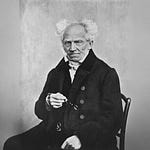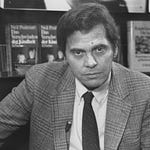Imagine, for a moment, that you live in a world where the sun revolves around the Earth. You see it rise, arc across the sky, and set. All your observations, all your scientific models, your very common sense, confirm this geocentric view. Generations of brilliant minds have built an intricate understanding of the cosmos around this core assumption. It makes perfect sense, doesn’t it?
Then, slowly, tiny cracks begin to appear. A planet’s orbit is a little off. Another doesn’t quite fit the grand design. You try to explain these “anomalies” away with more complex epicycles, ever more elaborate mechanisms. You patch and tweak, desperate to preserve the elegant system you know. But the patches grow cumbersome, ugly, untenable.
And then, an idea, almost heretical, emerges. What if the Earth isn’t the center? What if it’s just another planet, hurtling around the sun like the others? The initial reaction is dismissal, even ridicule. How could such a radical notion be true? But for those who dare to look, this new perspective doesn’t just explain the anomalies; it clarifies everything, making the universe suddenly simpler, more beautiful, more cohesive than the old, patched-up model.
This isn’t just a story about astronomy; it’s a metaphor for perhaps the most profound intellectual shift of the 20th century, orchestrated by a physicist turned historian of science named Thomas Kuhn. His seminal 1962 work, “The Structure of Scientific Revolutions,” didn’t just change how we understand science; it fundamentally altered how we perceive knowledge, truth, and human progress itself.
“Normal Science” and the Unseen Hand
Kuhn introduced us to the concept of a “paradigm.” This isn’t just a theory; it’s a comprehensive framework – a shared set of assumptions, theories, methods, and even values – that defines a particular scientific community at a given time. Think of it as the air scientists breathe, the language they speak, the very lens through which they view the world.
Under a reigning paradigm, “normal science” flourishes. This is the bulk of scientific work: solving puzzles within the established framework. Researchers aren’t trying to disprove the core tenets; they’re extending them, refining them, applying them to new problems. It’s a highly productive, cumulative process. Think of it like building a magnificent castle, brick by brick, using a blueprint everyone agrees on.
What makes a paradigm so powerful? It’s often invisible to those operating within it. Its rules are unspoken, its truths self-evident. It dictates what questions are worth asking, what methods are legitimate, and even what constitutes an “acceptable” answer. This intellectual consensus allows for incredible progress, but it also creates a kind of tunnel vision.
Anomalies and the Seeds of Doubt
But no paradigm is perfect. Eventually, “anomalies” emerge – observations or experimental results that just don’t fit the current framework. initially, these are ignored, explained away, or treated as minor glitches. Scientists are ingenious at finding ways to make stubborn facts conform to established theory.
However, if enough anomalies accumulate, or if a particularly jarring one appears, a crisis can brew. The established tools and assumptions start to fail. Younger scientists, or those less invested in the old ways, might begin to question the fundamentals. Doubt creeps in, not just about a specific theory, but about the entire blueprint of the castle.
The Revolution: “Paradigm Shifts”
This period of crisis is fertile ground for a “scientific revolution” – what Kuhn famously termed a “paradigm shift.” It’s not just an evolution or a gradual improvement; it’s a radical, often sudden, overthrow of the old framework and its replacement by a new one. It’s like tearing down the old castle and building an entirely new structure on its ruins, with a completely different architectural style.
When paradigms change, the world itself changes with them.
— Thomas Kuhn
Think of the Copernican revolution, the shift from Newtonian physics to Einstein’s relativity, or the move from creationism to evolutionary biology. These weren’t incremental adjustments; they were intellectual earthquakes that reordered our understanding of reality.
Incommensurability: When Worlds Collide
One of Kuhn’s most provocative ideas was “incommensurability.” This means that paradigms are not just different; they are often incomparable. Those operating within different paradigms might literally see different worlds, even when looking at the same data. Their terms, their concepts, their very understanding of “what is real” can be so fundamentally divergent that direct comparison becomes impossible.
How do you argue between two frameworks when there’s no neutral ground, no shared language, no objective yardstick to measure them against each other? Kuhn suggested that the adoption of a new paradigm is less about rational proof and more about a “conversion experience,” a gestalt switch that transforms one’s entire perception. It’s a moment when the duck-rabbit illusion suddenly becomes the rabbit for good.
The transfer of allegiance from one paradigm to another is a conversion experience that cannot be forced.
— Thomas Kuhn
This is where the invisible battle for minds truly takes shape, as discussed in the context of propaganda and perception, which is explored further in this analysis. Kuhn’s work offers a profound lens through which to understand how ingrained beliefs shape our reality and resist change.
The End of Absolute Truth?
If scientific progress isn’t a linear march toward an objective, absolute truth, but rather a series of paradigm shifts where older frameworks are simply replaced by newer, incommensurable ones, then what happens to the idea of truth itself?
Kuhn didn’t say truth doesn’t exist, but he certainly made it more complex. He suggested that truth is always relative to a particular paradigm. What is “true” within one framework might be nonsensical or false within another. There is no external, God’s-eye view from which to judge the ultimate superiority of one paradigm over another in an absolute sense.
This doesn’t mean “anything goes.” Paradigms still must solve problems, explain phenomena, and make predictions. But it implies that our understanding of reality is always contingent, always a temporary consensus, always susceptible to being overthrown by the next intellectual earthquake.
What if the very bedrock of our understanding, the ‘truth’ we cling to, is nothing more than a temporary consensus awaiting its inevitable collapse?
Kuhn’s Legacy: Beyond Science
Kuhn’s ideas, initially applied to natural sciences, quickly exploded into every field imaginable: economics, history, politics, art, even social movements. The concept of a “paradigm shift” became a ubiquitous phrase, describing any fundamental change in worldview.
His work forced us to confront:
The Social Construction of Knowledge: How much of what we accept as “objective truth” is shaped by the community we belong to, its shared assumptions, and its power structures?
The Non-Rational Aspects of Progress: That scientific change isn’t purely logical; it involves persuasion, conversion, and even generational shifts as older adherents to a paradigm eventually fade.
The Limits of Rationality: Our ability to reason is always situated within a framework. Stepping outside that framework is profoundly difficult, if not impossible, without a new one to step into.
Unlock deeper insights with a 10% discount on the annual plan.
Support thoughtful analysis and join a growing community of readers committed to understanding the world through philosophy and reason.
An Ongoing Revolution
Kuhn’s “The Structure of Scientific Revolutions” itself sparked a paradigm shift in the philosophy of science. It challenged the prevailing view of science as a purely rational, cumulative march toward truth, revealing it instead as a more human, messy, and revolutionary process.
So, the next time you encounter an idea that fundamentally challenges your worldview, or when you see an entire field struggling with inconsistencies, remember Kuhn. Remember that the “truth” you hold might simply be the dominant paradigm of your era, and that even the most solid foundations can tremble, crack, and ultimately give way to an entirely new way of seeing the world.
The intellectual earthquakes Kuhn described are not just historical events; they are ongoing, subtle, and often profound forces shaping our collective understanding. Are we ready for the next one?











